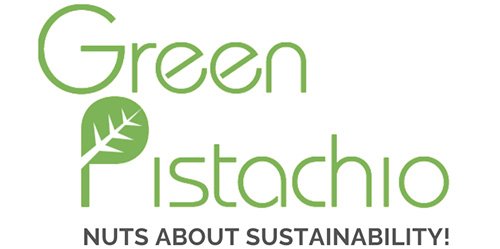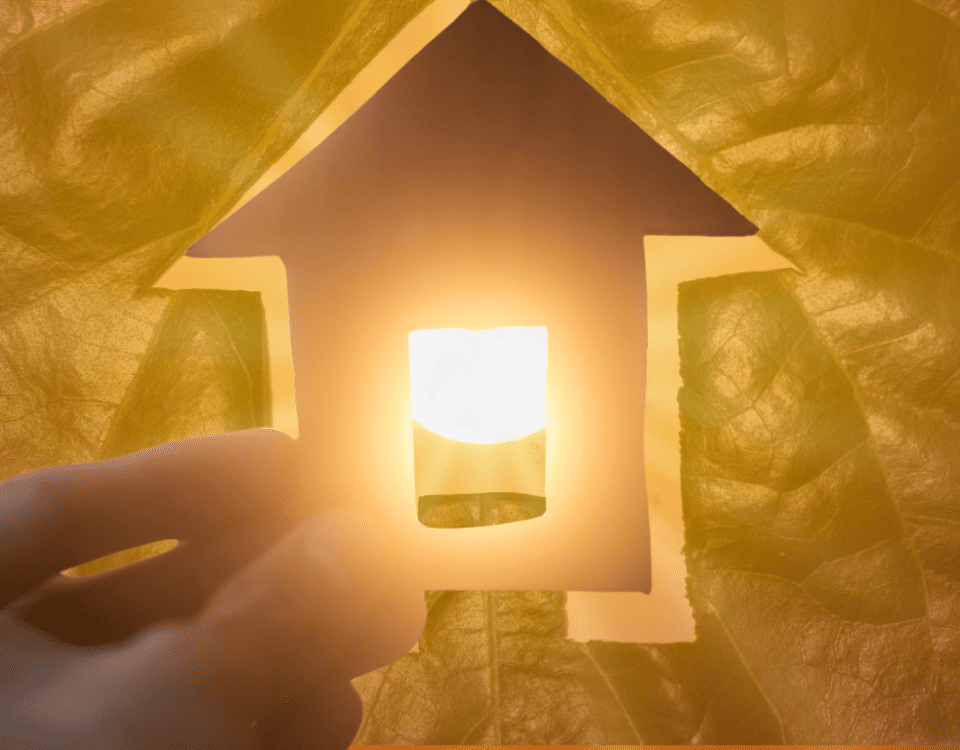Designing A Greener Planet: Beautiful Eco-Friendly Homes From Every Continent
Welcome to the quirky world of sustainable construction, where homes are built not only with bricks and beams but with a big, green heart! Did you know that a staggering 39% of global carbon emissions come from the construction industry? Yep, that cozy cottage dream is actually a carbon nightmare! But fret not budding builders—architects worldwide are donning their eco-friendly capes to turn this trend around.
To show you how, we decided to give you a little virtual world tour to explore some brilliantly creative homes that are making Mother Nature smile. Let’s open the door to five inspiring case studies of homes that have embraced eco-friendliness through the use of recycled materials.
The Ross Street House – Wisconsin
This house is sunbathing its way to sustainability! With solar panels supplying over half of its energy needs and a rainwater system in place, this eco-abode uses locally sourced, non-toxic materials. This compact home maximizes sunlight for natural heating in winter while minimizing it during summer with strategic shading. The use of locally sourced, non-toxic materials ensures a minimal environmental footprint. With its butterfly garden and vegetable patches, this house not only serves its inhabitants but also supports local wildlife.

Fun fact: Around 70% of construction waste can actually be recycled, and Ross Street House sure takes this to heart.
Cob Hut -Tamil Nadu, India
In the heart of Tamil Nadu, the Cob Hut stands as a testament to traditional building techniques blended with modern sustainability practices. Constructed by the Thannal group, this 350 sq ft is a tiny earthy fortress with walls of cob, a mixture of mud and straw. This classic building technique not only beats the heat but also keeps construction emissions at bay. It also utilizes natural materials such as lime, mud, and bamboo, while the roof is crafted from coconut thatch. This design not only provides excellent insulation but also keeps the home cool in the scorching Indian heat. The project demonstrates how low-cost housing can be both sustainable and culturally relevant, making it an ideal model for low-income families.
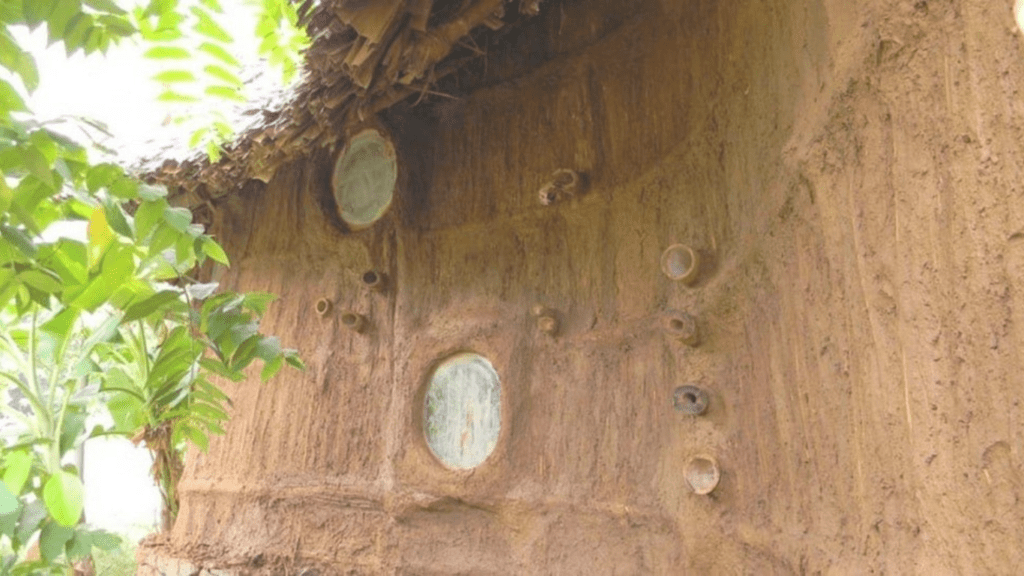
Fun fact: Cob houses like this one can last for centuries! They’ve been known to withstand earthquakes, thanks to their sturdy and flexible nature. Plus, the walls are so effective in regulating temperature that they make air conditioning seem like an ancient relic.
Warehouse Greenhouse – Brunswick, Melbourne
When a 1960s warehouse meets urban gardening, magic happens. This Melbourne marvel maximizes its existing structure to minimize waste, drawing on solar power and a rooftop garden to create a fresh, green oasis. It’s a testament to how reusing old spaces can slash emissions and cost. The Warehouse Greenhouse is a creative and vibrant family home where the architects preserved much of the existing structure to harness its embodied energy and minimize waste. The addition features a rooftop garden that allows for urban gardening while optimizing passive heating and cooling throughout the year. With no need for supplemental heating or cooling systems, this home relies on energy-efficient ventilation and solar power to maintain comfort. It’s a perfect example of how repurposing old buildings can lead to innovative and sustainable living spaces
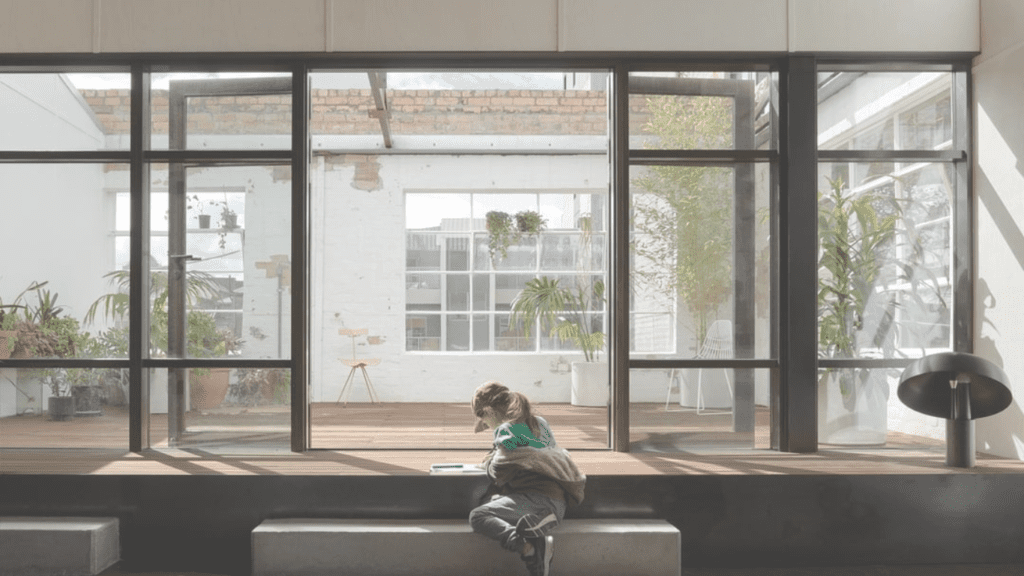
Fun fact: Vertical gardens are a key feature, and they’ve been shown to improve air quality by filtering pollutants!
Maison Marly – Paris, France
In a neighborhood known for its traditional architecture, Maison Marly shines with its contemporary and eco-friendly design. This Passive House certified building uses pre-oiled grey larch cladding over wood-fibre insulation boards for superior thermal performance. Maison Marly’s energy efficiency laughs at Paris winters with triple-glazed windows and a single cozy fireplace. By incorporating eco-friendly materials certified by PEFC and FSC, this house not only respects its environment but also adds a playful touch to the neighborhood.
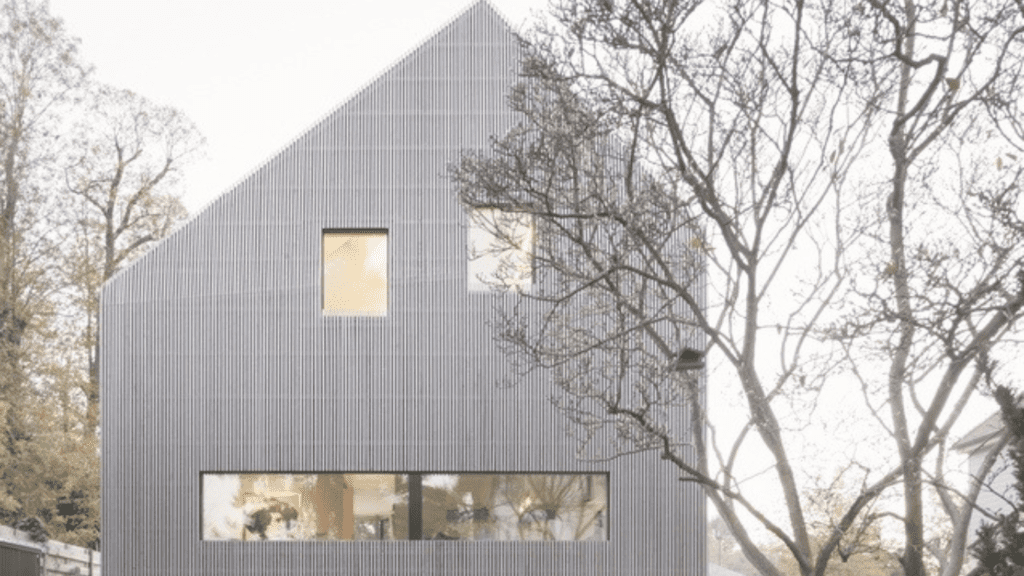
Fun fact: Triple-glazed windows can reduce heat loss by up to 50% compared to single glazing, significantly cutting down on energy use for heating. This not only helps keep those heating bills in check but also contributes to combating climate change by reducing a household’s carbon footprint
Edgars Creek House – Victoria, Australia
Nestled in a serene bushland setting, Edgars Creek House exemplifies harmony with the environment through its thoughtful design and whispers sweet nothings to the surrounding nature by using materials like rammed earth and ironbark timber. It’s a home that’s as kind to its environment as to its residents, blending subtle design with sustainability. A U-shaped structure allows for optimal sunlight exposure and minimises environmental impact. Other innovative features include a rainwater collection system and a renewable energy all-electric setup.This house is designed with a future focus; once it reaches the end of its life cycle, it can be disassembled, allowing its materials to be reused instead of being discarded into landfills.
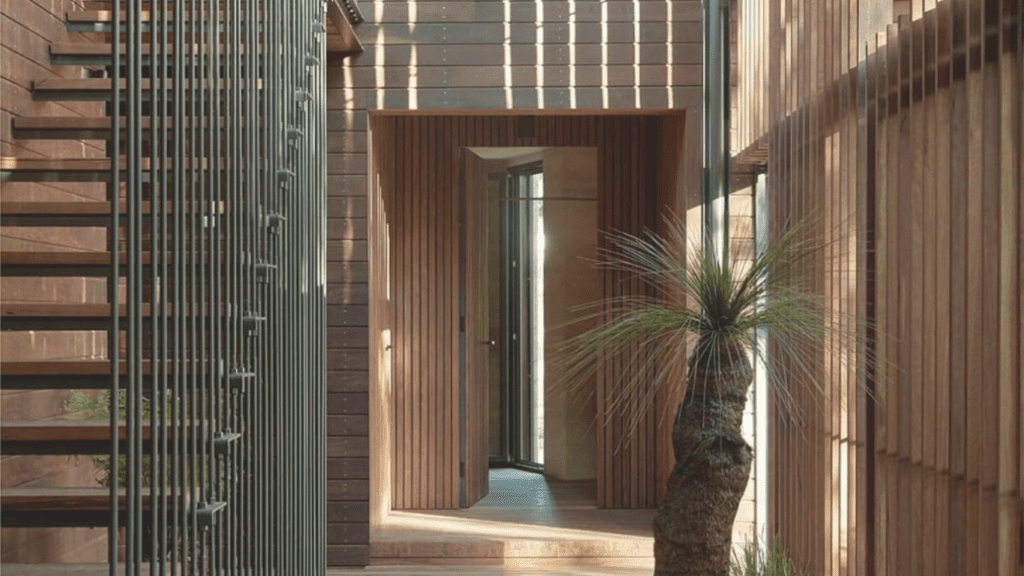
Fun fact: The construction and demolition sector is responsible for generating approximately one-third of all waste worldwide? That’s a staggering amount, considering it roughly equates to more than 1 billion tons every year!
These five homes showcase how creativity and sustainability can go hand-in-hand in modern architecture. By utilizing recycled materials and innovative designs, these case studies not only reduce waste but also inspire others to consider eco-friendly living solutions. Whether it’s through traditional techniques or contemporary designs, each home tells a story of commitment to our planet’s well-being—proving that building green can be both fun and functional!
The Big Picture:
Annually, about 1.5 million new homes are constructed globally. By opting for sustainable materials and eco-friendly designs, we can cut the substantial waste and emissions generated by traditional methods. With innovative materials like bamboo and hempcrete at our disposal, the possibilities for green building are endless. Let’s construct not just homes but habitats that honor the Earth.
Join the green revolution! Whether you’re dreaming of a recycled retreat or a sophisticated solar sanctuary, let’s build a future worth living in. By embracing sustainable construction, we’re crafting homes that are not only practical and beautiful but also kind to our planet. So, ready to rethink that dream home? Let’s make it a reality—in green!
Sources:
- https://www.greeneducationfoundation.org/sustainable-water-challenge/case-studies/case-study-ross-street-house.html
- https://www.ihf.in/ihfblog/developing-sustainable-housing-part-2-case-studies-of-sustainable-housing
- https://architecturenow.co.nz/articles/the-eco-ethical-house-case-studies/
- https://www.breathe.com.au/guides/houses/case-studies
- https://greenfeels.in/blogs/sustainability-basics/eco-friendly-houses-in-india
